
CENNI STORICI
Poche le reliquie dei tempi romani, ma sufficienti a testimoniare come, pure allora, la località dovesse aver assunto una certa importanza, soprattutto in relazione alla sua fortunata posizione geografica. Poco sappiamo anche per il primo medioevo. Lazise fu il primo libero comune del Garda, e divenne assai importante nel X secolo, quando ottenne un diploma imperiale che attribuiva speciali diritti di pesca, di fortificazione e di pedaggio. D’epoca altomedievale è sicuramente una piccola necropoli sorta nei pressi. Nel 1077 Lazise godette di altre concessioni imperiali: forse in questa circostanza il consistente borgo ebbe mura e fossa con castello. Le fortificazioni proteggevano gli abitanti dalle incursioni esterne, ma anche da quelle della famiglia dei Turrisendi, che signoreggerà su tutta la cosiddetta Giudicaria Gardense. Anche gli Scaligeri riconobbero la grande importanza economico-militare di Lazise e provvidero alla completa riedificazione delle mura, del castello e della rocca, dell'attuale palazzo della dogana e della "Torre del Cadenòn" - ora scomparsa - con l’adiacente cortina di protezione del porto. Venezia, agli inizi del XV secolo, quando occupò Verona, fece la sua apparizione anche a Lazise e vi stabilì un'importante dogana, a cui difesa fu posta una forte torre merlata. Ma di Lazise s'impadronirono momentaneamente anche i Visconti durante la guerra ch'essi mossero di lì a poco alla Serenissima. Ai tempi della Lega di Cambrai contro la Serenissima, i rivieraschi si mostrarono favorevoli ai nemici della Repubblica, tanto che il provveditore del Governo veneto Zaccaria Loredan decise di abbandonare la regione, non prima di aver bruciato in Lazise la galea e due fuste poste al suo comando, perché non cadessero nelle mani dei nemici. Per quattro secoli poi - fino ai nuovi fasti delle recenti affermazioni turistiche - anche Lazise sarà un tranquillo paese: vi si continuerà a praticare la pesca, il commercio e, con un suo notevole sviluppo, l'agricoltura.
DA VEDERE
Il castello scaligero. Quanto rimane dell'antico castello scaligero è compreso nel recinto della villa Buri, ora Bernini. Nel castello risiedevano i magistrati veneti al tempo della Repubblica e di loro è ricordo in lapidi. Occupato il territorio dopo il 1796, i Francesi posero in esso una fabbrica di salnitro per la polvere da sparo. Gli Austriaci lo vendettero poi ad un privato per sole 1500 lire e da allora il castello servì per molto tempo da cava di pietre a chi in paese voleva costruire; perfino le scale interne delle quattro torri furono asportate. Intervenne il conte Buri, che, comperato il castello, conservò quanto rimaneva di conservabile, restaurando anche qualche parte non del tutto distrutta. Il porto antico, riservato al castello e che per l’incuria degli ultimi possessori si era trasformato in palude, fu allora interrato e trasformato in giardino; con un’operazione che forse oggi non approveremmo.
Le chiese. Nel periodo del romanico padano, nascono a Lazise anche alcune chiese.
L'antica pieve di San Martino anzitutto, distrutta, ove ora è il cimitero, ma poi via via, nei secoli a noi più vicini, anche le altre: San Nicolò al Porto (ricordata per la prima volta nel 1320), i Santi Fermo e Rustico (di ragione della comunità), i Santi Faustino e Giovita (di ragione del Capitolo dei Canonici di Verona e ad essi confermata da numerose bolle papali lungo tutto l'arco del secolo XII), la Madonna della Pergolana, i Santi Piero e Giuliano (della quale non restano che pochi ruderi), oltre ad altri oratori minori in varie contrade, e beninteso, l'attuale, ottocentesca chiesa dedicata ai Santi Zenone e Martino su disegno del Trezza e del Ronzani, sull'area di un antico San Zeno che già dal 1530 cominciò a servire da parrocchiale.
A Colà un’antica chiesa è testimoniata già dai secoli XIl-XIII. Dedicata a San Giorgio, essa è parrocchia con rettore (anche se non del tutto sciolto dai doveri verso la chiesa matrice) già nel 1526. Ricostruita nel 1762 fu decorata dal Piatti e consacrata quindi nel 1927.
A Pacengo, la parrocchiale, dedicata a San Giovanni Battista, è pure ricordata nel 1526. Ma l'attuale edificio fu costruito nel 1787-1792 su disegno dell'architetto L. Rossi. Essa è arricchita di dipinti sempre del Piatti e di un altare maggiore rutilante di marmi (1793) e attribuito agli Zoppi e agli Spazzi, così come le acquasantiere.
Le ville. Legato alla dominazione veneziana e successivamente al fatto turistico, è anche il fenomeno della costruzione o della ricostruzione d’importanti ville che costellano tutto il territorio comunale. o Dotata di parco e costruita, o meglio trasformata, nell’Ottocento dal conte Girolamo Murari della Corte Bra’, Villa Bagatta è una villa ottocentesca d’architettura pseudo-moresca. o Per epoca di costruzione e per la presenza di un parco le può essere avvicinata Villa Bottona, che ha però di notevole soltanto il parco vastissimo, esteso lungo la riva del lago.o Poco fuori Lazise, si trova Villa Montinghel, già di proprietà dei Brenzoni. E’ abitazione semplice e severa, circondata dalle colline moreniche e da vigneti ed oliveti. In fondo ad un lungo viale s’alza la torre, probabilmente del Cinquecento, e la casa padronale in due stili distinti. Bella la corte rustica, la grande uccelliera e l’orto in gran parte coltivato a fiori. o Villa da Sacco, costruzione d'origine cinquecentesca, è composta di due parti, una delle quali ha particolarmente conservato il sapore dell'epoca. Notevole il fregio di gronda in cotto. Bello anche qui è il parco, soprattutto per la sua posizione di collina. o Villa "La Pergolana", che ha forma di castello merlato e fu costruita nella seconda la metà dell'Ottocento, su disegno di G. Franco, con vasto parco, e con giardino digradante al lago, può essere avvicinata a Villa ex Miniscalchi, di Colà, importante anch'essa specialmente per il parco, che si estende vastissimo e che ha quattro solenni ingressi. Essa è costituita da due edifici principali, di cui il minore è il più antico, con iscrizioni relative ai Sansebastiani e ai Moscardo, antichi proprietari prima dei Miniscalchi (era stata costruita dall'architetto milanese Canonica, ma in seguito, però, ha subito diverse trasformazioni). o Villa Conferazene, in località omonima, fu costruita ancora prima del secolo XVII. Fu riedificata ed ampliata nel 1790 dal conte Giovanni Battista Marastoni, che ricostruì nella stessa epoca anche la chiesetta attigua. L'edificio è semplice; ha intorno una splendida vegetazione, specialmente di cipressi, che formano un lungo viale e sorgono a gruppi presso la villa. o Villa Fumanelli, a Colà, sorge isolata su un poggio non lungi dal paese, circondata da un denso parco: risale al XVII o XVIII secolo, e ripete le corrette forme architettoniche care agli epigoni sammicheliani.
Poche le reliquie dei tempi romani, ma sufficienti a testimoniare come, pure allora, la località dovesse aver assunto una certa importanza, soprattutto in relazione alla sua fortunata posizione geografica. Poco sappiamo anche per il primo medioevo. Lazise fu il primo libero comune del Garda, e divenne assai importante nel X secolo, quando ottenne un diploma imperiale che attribuiva speciali diritti di pesca, di fortificazione e di pedaggio. D’epoca altomedievale è sicuramente una piccola necropoli sorta nei pressi. Nel 1077 Lazise godette di altre concessioni imperiali: forse in questa circostanza il consistente borgo ebbe mura e fossa con castello. Le fortificazioni proteggevano gli abitanti dalle incursioni esterne, ma anche da quelle della famiglia dei Turrisendi, che signoreggerà su tutta la cosiddetta Giudicaria Gardense. Anche gli Scaligeri riconobbero la grande importanza economico-militare di Lazise e provvidero alla completa riedificazione delle mura, del castello e della rocca, dell'attuale palazzo della dogana e della "Torre del Cadenòn" - ora scomparsa - con l’adiacente cortina di protezione del porto. Venezia, agli inizi del XV secolo, quando occupò Verona, fece la sua apparizione anche a Lazise e vi stabilì un'importante dogana, a cui difesa fu posta una forte torre merlata. Ma di Lazise s'impadronirono momentaneamente anche i Visconti durante la guerra ch'essi mossero di lì a poco alla Serenissima. Ai tempi della Lega di Cambrai contro la Serenissima, i rivieraschi si mostrarono favorevoli ai nemici della Repubblica, tanto che il provveditore del Governo veneto Zaccaria Loredan decise di abbandonare la regione, non prima di aver bruciato in Lazise la galea e due fuste poste al suo comando, perché non cadessero nelle mani dei nemici. Per quattro secoli poi - fino ai nuovi fasti delle recenti affermazioni turistiche - anche Lazise sarà un tranquillo paese: vi si continuerà a praticare la pesca, il commercio e, con un suo notevole sviluppo, l'agricoltura.
DA VEDERE
Il castello scaligero. Quanto rimane dell'antico castello scaligero è compreso nel recinto della villa Buri, ora Bernini. Nel castello risiedevano i magistrati veneti al tempo della Repubblica e di loro è ricordo in lapidi. Occupato il territorio dopo il 1796, i Francesi posero in esso una fabbrica di salnitro per la polvere da sparo. Gli Austriaci lo vendettero poi ad un privato per sole 1500 lire e da allora il castello servì per molto tempo da cava di pietre a chi in paese voleva costruire; perfino le scale interne delle quattro torri furono asportate. Intervenne il conte Buri, che, comperato il castello, conservò quanto rimaneva di conservabile, restaurando anche qualche parte non del tutto distrutta. Il porto antico, riservato al castello e che per l’incuria degli ultimi possessori si era trasformato in palude, fu allora interrato e trasformato in giardino; con un’operazione che forse oggi non approveremmo.
Le chiese. Nel periodo del romanico padano, nascono a Lazise anche alcune chiese.
L'antica pieve di San Martino anzitutto, distrutta, ove ora è il cimitero, ma poi via via, nei secoli a noi più vicini, anche le altre: San Nicolò al Porto (ricordata per la prima volta nel 1320), i Santi Fermo e Rustico (di ragione della comunità), i Santi Faustino e Giovita (di ragione del Capitolo dei Canonici di Verona e ad essi confermata da numerose bolle papali lungo tutto l'arco del secolo XII), la Madonna della Pergolana, i Santi Piero e Giuliano (della quale non restano che pochi ruderi), oltre ad altri oratori minori in varie contrade, e beninteso, l'attuale, ottocentesca chiesa dedicata ai Santi Zenone e Martino su disegno del Trezza e del Ronzani, sull'area di un antico San Zeno che già dal 1530 cominciò a servire da parrocchiale.
A Colà un’antica chiesa è testimoniata già dai secoli XIl-XIII. Dedicata a San Giorgio, essa è parrocchia con rettore (anche se non del tutto sciolto dai doveri verso la chiesa matrice) già nel 1526. Ricostruita nel 1762 fu decorata dal Piatti e consacrata quindi nel 1927.
A Pacengo, la parrocchiale, dedicata a San Giovanni Battista, è pure ricordata nel 1526. Ma l'attuale edificio fu costruito nel 1787-1792 su disegno dell'architetto L. Rossi. Essa è arricchita di dipinti sempre del Piatti e di un altare maggiore rutilante di marmi (1793) e attribuito agli Zoppi e agli Spazzi, così come le acquasantiere.
Le ville. Legato alla dominazione veneziana e successivamente al fatto turistico, è anche il fenomeno della costruzione o della ricostruzione d’importanti ville che costellano tutto il territorio comunale. o Dotata di parco e costruita, o meglio trasformata, nell’Ottocento dal conte Girolamo Murari della Corte Bra’, Villa Bagatta è una villa ottocentesca d’architettura pseudo-moresca. o Per epoca di costruzione e per la presenza di un parco le può essere avvicinata Villa Bottona, che ha però di notevole soltanto il parco vastissimo, esteso lungo la riva del lago.o Poco fuori Lazise, si trova Villa Montinghel, già di proprietà dei Brenzoni. E’ abitazione semplice e severa, circondata dalle colline moreniche e da vigneti ed oliveti. In fondo ad un lungo viale s’alza la torre, probabilmente del Cinquecento, e la casa padronale in due stili distinti. Bella la corte rustica, la grande uccelliera e l’orto in gran parte coltivato a fiori. o Villa da Sacco, costruzione d'origine cinquecentesca, è composta di due parti, una delle quali ha particolarmente conservato il sapore dell'epoca. Notevole il fregio di gronda in cotto. Bello anche qui è il parco, soprattutto per la sua posizione di collina. o Villa "La Pergolana", che ha forma di castello merlato e fu costruita nella seconda la metà dell'Ottocento, su disegno di G. Franco, con vasto parco, e con giardino digradante al lago, può essere avvicinata a Villa ex Miniscalchi, di Colà, importante anch'essa specialmente per il parco, che si estende vastissimo e che ha quattro solenni ingressi. Essa è costituita da due edifici principali, di cui il minore è il più antico, con iscrizioni relative ai Sansebastiani e ai Moscardo, antichi proprietari prima dei Miniscalchi (era stata costruita dall'architetto milanese Canonica, ma in seguito, però, ha subito diverse trasformazioni). o Villa Conferazene, in località omonima, fu costruita ancora prima del secolo XVII. Fu riedificata ed ampliata nel 1790 dal conte Giovanni Battista Marastoni, che ricostruì nella stessa epoca anche la chiesetta attigua. L'edificio è semplice; ha intorno una splendida vegetazione, specialmente di cipressi, che formano un lungo viale e sorgono a gruppi presso la villa. o Villa Fumanelli, a Colà, sorge isolata su un poggio non lungi dal paese, circondata da un denso parco: risale al XVII o XVIII secolo, e ripete le corrette forme architettoniche care agli epigoni sammicheliani.
HISTORICAL SIGNALS
Little the reliquie of roman, but sufficient the times to testify like, also then, the locality must have assumed one sure importance, above all in relation to its fortunate geographic position. Little we know also for the first Middle Ages. Lazise was first free the common one of the Garda, and divenne much important in X the century, when it obtained an imperial diploma that it attributed special rights of peach, fortification and toll. Of altomedievale age it is sure one small necropoli risen in the pressed ones. In the 1077 Lazise it enjoyed other imperial concessions: perhaps in this the consisting circumstance village had walls and fossa with castle. The fortifications proteggevano the inhabitants from the external incursions, but also from those of the family of the Turrisendi, that signoreggerà on all the so-called Giudicaria Gardense. Also the Scaligeri recognized the great economic-military importance of Lazise and supplied to the complete rebuilding of walls, of the castle and of the rocca, of it it puts into effect them palace of customs and the “Tower of the Cadenòn” - hour passing - with the adjacent curtain of protection of the port. Venice, to the beginnings of XV the century, when Verona occupied, made its apparition also to Lazise and an important established you customs, to which defended strong merlata tower was placed one. But of Lazise momentarily s'impadronirono also the Visconti during the war ch'essi moved little of them to the Most serene one. To the times of the Alloy of Cambrai against the Most serene one, the rivieraschi the enemies of the Republic, a lot showed themselves favorable that the provveditore of the determined Government Veneto Zaccaria Loredan to abandon the region, not before having burnt in Lazise the galea and two fuste placed its commando, because they did not fall in the hands of the enemies. For four centuries then - until the new ones it makes you of the recent tourist affirmations - also Lazise will be a calm country: it will be continued to practice the peach, the commerce and, with a its remarkable development, agriculture to you.
TO SEE
The scaligero castle. How much remains of the ancient scaligero castle is comprised in the fencing of the Buri villa, hour Bernini. In the castle the magistrates veneti to the time of the Republic resided and of they it is memory in stones to death. Occupied the territory after 1796, the French placed in it a factory of salnitro for the powder from talk nonsense. The Austrians will then sell it to private for sun 1500 Liras and from then the castle he served in order much time from quarry of stones to who in country wanted to construct; the inner scales of the four towers were even removed. The Buri took part conte, than, bought the castle, it conserved how much remained of preservable, restoring also some part not completely destroyed. The ancient, classified port to the castle and that into the incuria of last the possessory ones it had been transformed in swamp, then was buried and transformed in garden; with an operation that today we would not perhaps approve of. The churches. In the Romanesque period of the Po one, some churches are born to Lazise also. The ancient one pieve of Saint Martino first of all, destroyed, where hour is the cemetary, but then gradually, in the centuries to we more neighbors, also the others: Saint Nicolò to the Port (remembered for before the time in 1320), Knows to you Firm and Peasant (of reason of the community), Knows Faustino and Giovita to you (of reason of the Understood one it of the Canonical ones of Verona and to they confirmed from numerous papal bubbles along all the arc of century XII), the Madonna of the Pergolana, It knows Piero and Giuliano to you (of which little ruderi do not remain that), beyond to other smaller oratories in several contrade, and of course, it puts into effect it them, nineteenth-century church dedicated to Knows Zenone and Martino to you on design of the Trezza and the Ronzani, onthe area of ancient a Saint Zeno that already gives 1530 began to serve from parochial. An ancient church is testified There already from the XIl-XIII centuries. Dedicated to Saint George, it is parish with chancellor (even if not completely melted from the duties towards the church matrix) already in 1526. Reconstructed in 1762 it was decorated from the Plates and consecrated therefore in 1927. To Pacengo, the parochial one, dedicated to Saint Giovanni Batiste, also are remembered in 1526. But it puts into effect it them building was constructed in 1787-1792 on design of architect Red L. It is enriched of paintings always of the Plates and a greater marble altar rutilante (1793) and attributed to the Cripples and Spazzi, therefore like acquasantiere. The villas. Legacy to the veneziana domination and subsequently to the tourist fact, is also the phenomenon of the construction or the reconstruction of important villas that they stud all the communal territory. or Equipped of park and constructed, or better transformed, in the 1800's from conte the Girolamo Murari of the Bra Court', Bagatta Villa is one nineteenth-century villa of pseudo-moresca architecture. or For age of construction and the presence of a park Bottona Villa can be approached to them, that it has but of remarkable only the immensest park, extended along the river of the lago. or Little outside Lazise, finds Montinghel Villa, already of property of the Brenzoni. And' simple and strict room, encircled from morainic hills and vineyards and olive groves. In bottom to along tree-lined avenue s' it raises the tower, probably of the 1500's, and the padronale house in two distinguished styles. Beautiful the peasant court, the great aviary and the garden in great cultivated part to flowers. or Villa from Bag, construction of cinquecentesca origin, is composed of two parts, one of which has particularly conserved the sapore of the age. Remarkable the fregio of gronda in cooked. Beautiful also it is the park here, above all for its hill position. or Villa “the Pergolana”, that it has shape of merlato castle and was constructed in second the half of the 1800's, on Frank design of G., with immense park, and digradante garden to the lago, can be approached former Miniscalchi, There important Villa anch'essa especially for the park, than it extends immensest and that it has four solemn incomes. It is constituted from two main buildings, of which the minor it is most ancient, with relative registrations to the Sansebastiani and the Moscardo, antichi owners before the Miniscalchi (had been constructed from the Canonical from Milan architect, but later on, but, it has endured various transformations). or Conferazene Villa, in locality omonima, was still constructed before century XVII. It was rebuilt and widened in the 1790 from conte the Giovanni Marastoni Batiste, that it reconstructed in the same age also the chiesetta contiguous. The building is simple; it has around a splendid vegetation, especially of cypresses, that they form along tree-lined avenue and they rise to groups near the villa. or Fumanelli Villa, There, rises isolated on a hill not lungi from the country, encircled from a dense park: laughed them to the XVII or XVIII century, and repeats the corrected architectonic shapes beloveds to the epigoni sammicheliani.
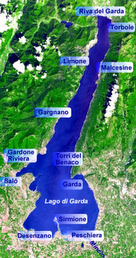

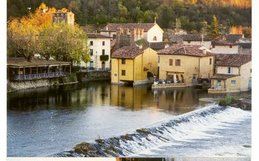
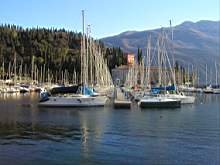
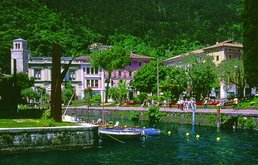
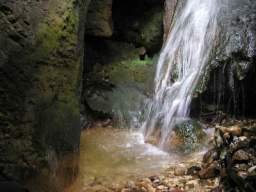

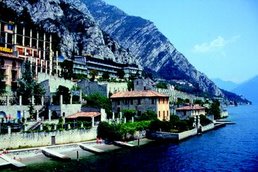
Nessun commento:
Posta un commento